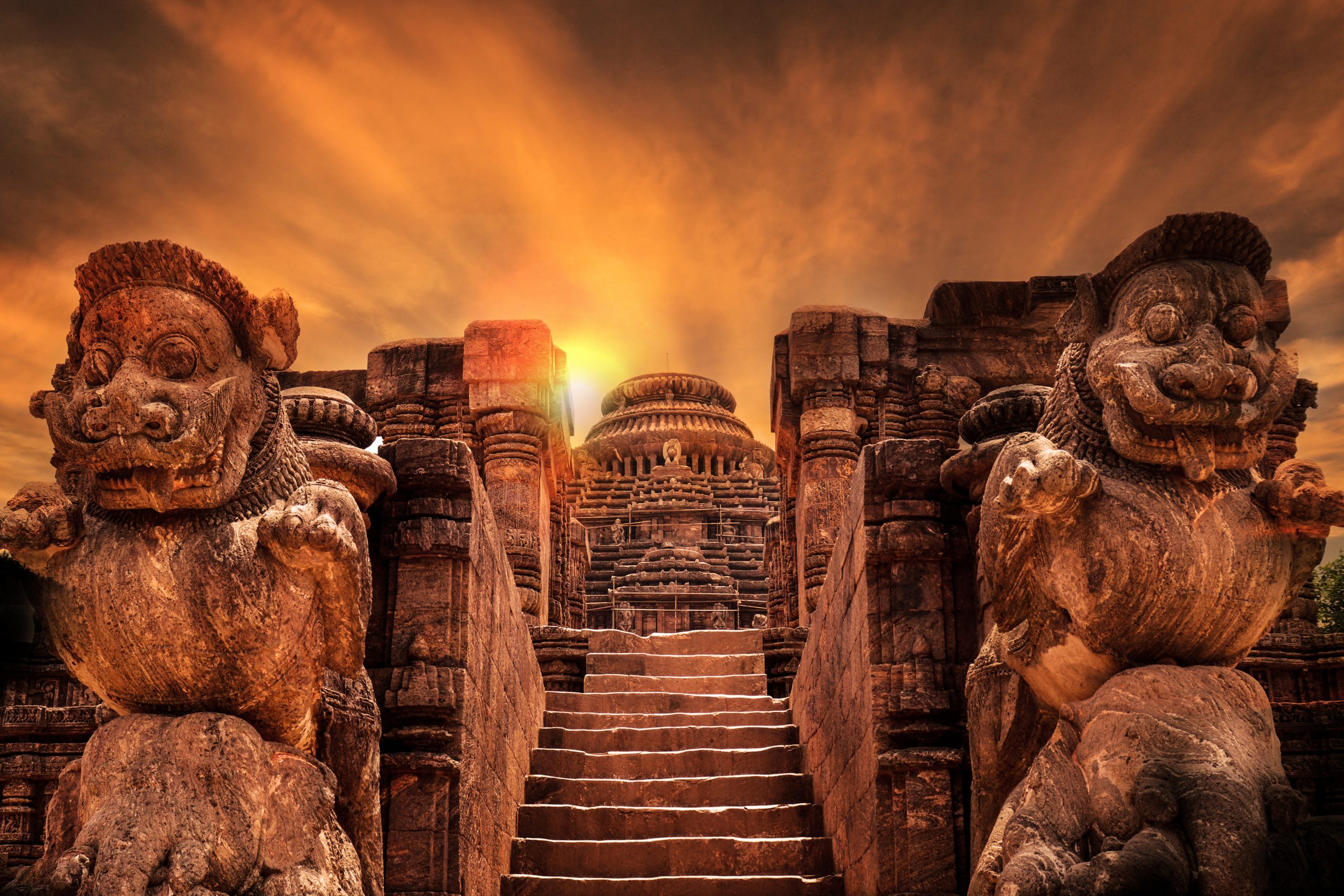Konark
The Sun Temple at Konark is a magnificent temple of Odisha temple architecture. This beautiful temple is one of world’s wonders and was built in the 13th century by King Narasimhadeva. The word ‘Konark’ is a combination of two words ‘Kona’ and ‘Arka’. ‘Kona’ means corner and ‘Arka’ means Sun; when combined it becomes ‘Sun of the corner’. The Konark Sun temple is situated on the north east corner of the city of Puri in the state of Odisha and is dedicated to the Sun God, Surya. The temple was originally built at the mouth of the river Chandrabhaga, but the waterline has receded since then. The temple is known for its exquisite stone carvings and sculptures all made of stone. It has been the most famous tourist destination in the state of Odisha and has been an UNESCO World heritage site since 1984.
The temple follows the traditional style of Kalinga architecture. The temple complex which is partially in ruins has the appearance of a 100-foot high chariot with horses and wheels all carved of Khondalite rocks. The entire temple is shaped like a giant chariot with seven horses and twenty-four wheels, carrying the Sun God across the heavens. The seven horses depict the seven days of the week and the wheels at the Konark temple have an important significance. There are twenty-four wheels in pairs of two on either side and back of the chariot. Each wheel has 8 spokes, each representing the 3hour period or the Prahara in a 24hour day. Each wheel has unique stone carvings and acts as sun dials to calculate time accurately to a minute.
The temple is comprised of a sanctum with a lofty Shikara, a Jagamohana (audience hall) and a detached Natya mandir (hall of dance). The original temple had a main sanctum sanctorum (vimana), which was supposedly 229 feet tall. But because of the huge weight of the super structure and weak soil of the area, the main vimana fell in 1837. The audience hall (Jagamohana), which is about 128 feet still stands and is the principal structure in the surviving ruins.The main temple faces the east so that the first rays of the sun hit the main entrance through the Natya mandir. Though much of the temple is in ruins, the structures and elements that still remain are famous for their intricate carvings, artwork and story panels. The Konark temple is also known for its erotic sculptures of maithunas.
The uniqueness of the Sun Temple of Konark lies in the fact that it was built with an architectural setup of various magnets. During the construction of the main tower of the temple, an iron plate was placed between every two stone pieces. The lodestone or the naturally occurring magnetite at the top of the temple was said to be a huge 52ton magnet. According to legend, the statue of the Sun God inside the temple was built of a material with high iron content and was said to be floating in air due to the unique arrangements of the magnets at the top and bottom and the placement of reinforced magnets along the temple walls.
Every single aspect of the Sun temple at Konark is unique and the architectural marvel is awe inspiring. Centuries ago, the temple was very close to the sea and was used as a navigational point by European sailors. They referred to the temple as “The Black Pagoda” because of its color and the magnetic force that drew ships to its shores and caused ship wrecks.
The Sun temple at Konark is definitely a place to visit to see the astounding brilliance in architecture on such a mammoth scale. It remains a major pilgrimage site for Hindus, who gather there every year for the Chandrabhaga Mela around the month of February.
Bibliography


